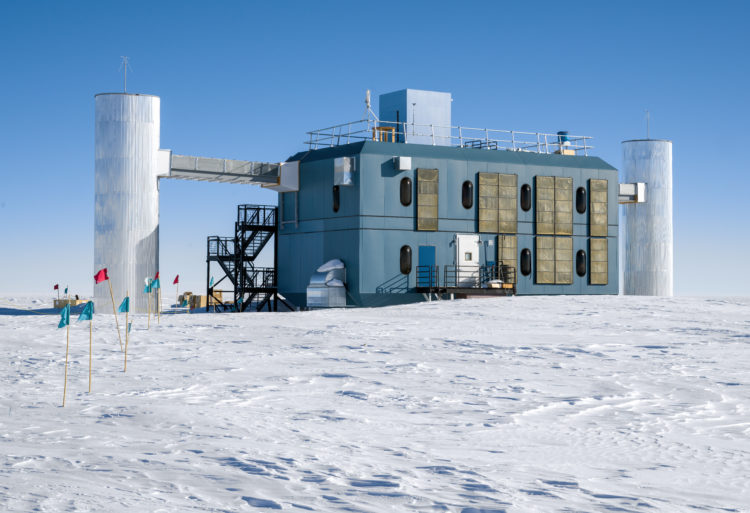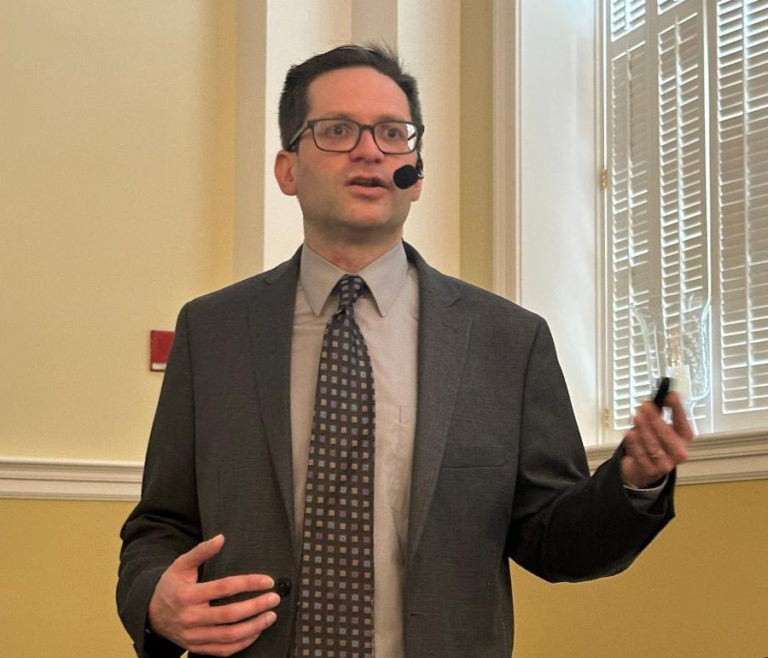
By Anne W. Semmes
Our views of astronomy are constantly changing, first with the help of the Hubble Space Telescope enabling us to see some of the most distant stars and galaxies yet seen. And now with the James Webb Space Telescope, its high-resolution and high-sensitivity instruments allowing us to see objects “too old, too distant, or faint” for the Hubble Space Telescope. Observations are being made of the first stars, the formation of the first galaxies, and of potentially habitable exoplanets.
But thanks to the relatively new IceCube Neutrino Observatory built deep into the ice of Antarctica and located at the Amundsen-Scott South Pole Station, we now have an entirely new view of our Milky Way galaxy. All this since its full construction in 2010 by the National Science Foundation with support from 14 countries. These scientists, working with their “new data analysis tools” are predicting that observatory has the potential to reveal “hidden features of our galaxy never before seen by humanity.”
This Observatory was introduced to me by my New Zealand based astronomer stepbrother Michael Snowden when visiting him earlier this year. He wanted to share with me less-known but impressive astronomy-focused projects around the world that are “extremely important.” The IceCube Neutrino Observatory is the first of five of those projects to be featured in the Sentinel over the coming weeks.
So, the first question was what is a neutrino? “That’s an amusing question,” said Michael, “because astronomers ourselves don’t know what they are, but we know some properties of them. It’s a really weird little particle [also called “ghost particles”]. It travels at the speed of light. So, it’s whisking through the galaxy at tremendous speeds. The thing so extraordinary about them is they’ll penetrate anything. And most of the neutrinos, for example, at that telescope at the South Pole, have gone through the Earth when they strike the telescope.”
Mchael explained just how that neutrino is being tracked in that ice cube. “Just imagine on the surface of the South Pole you lay off a square,” and then implant cables running down 80 or more boreholes cut in that square of ice a thousand meters deep. “These cables are attached to detectors that will detect a neutrino when it occasionally interacts with an atom in the ice. And when it does, you get a blue flash of light. Of course, it’s minuscule. But these detectors are extremely powerful instruments, and they are able to detect a very small flash and record it.”
What intrigues Michael is “recently, for the first time we have a direction of the neutrino because you can time the flash from one side of the ice cube to the other…And when you do, you can tell which direction the neutrino came from.” And those neutrinos turn out to be coming not only from the Milky Way galaxy, but from the center of a nearby galaxy. “The latest thinking is they come from explosions that occur quite regularly, and they just saturate the universe with these neutrinos.” And “at the speed of light, it would take them millions of years to get here.”
Sharing Michael’s wonder of neutrinos are other scientists. “Observing our own galaxy for the first-time using particles instead of light is a huge step,” IceCube member and professor of physics Naoko Kurahashi Neilson has written. And “Now that we also have the neutrinos, we can look at those things together to really understand where energetic matter is coming from, in our galaxy and beyond it,” reported NASA scientist Elizabeth A. Hays in a recent New York Times article. And now reportedly in that article the next step is “to identify specific neutrino sources within the Milky Way,” according to IceCube spokesperson Ignacio Taboada, a professor of physics at the Georgia Institute of Technology.
“Let me just say,” Michael concluded, “that the entire physics of a neutrino is a profound and very deeply important part of nuclear physics that’s pursued today. And, astronomers are more and more, all the time, adding huge knowledge to fundamental physics.”
“So, when you ask me the question of what their significance is, what good are they, knowing these things are whisking around the universe, you’re asking a question about nuclear physics – really astronomy, don’t forget, is a branch of physics. We are physicists, really. So, when you expand the knowledge and the understanding of the behavior of neutrinos, you’re talking about understanding very deeply the whole field of physics.”
Up next, is NASA’s Transiting Exoplanet Survey Satellite (TESS) launched in 2018, and overseen by Michael Snowden’s longtime friend, David Latham, an astronomer at the Harvard-Smithsonian Center for Astrophysics.




